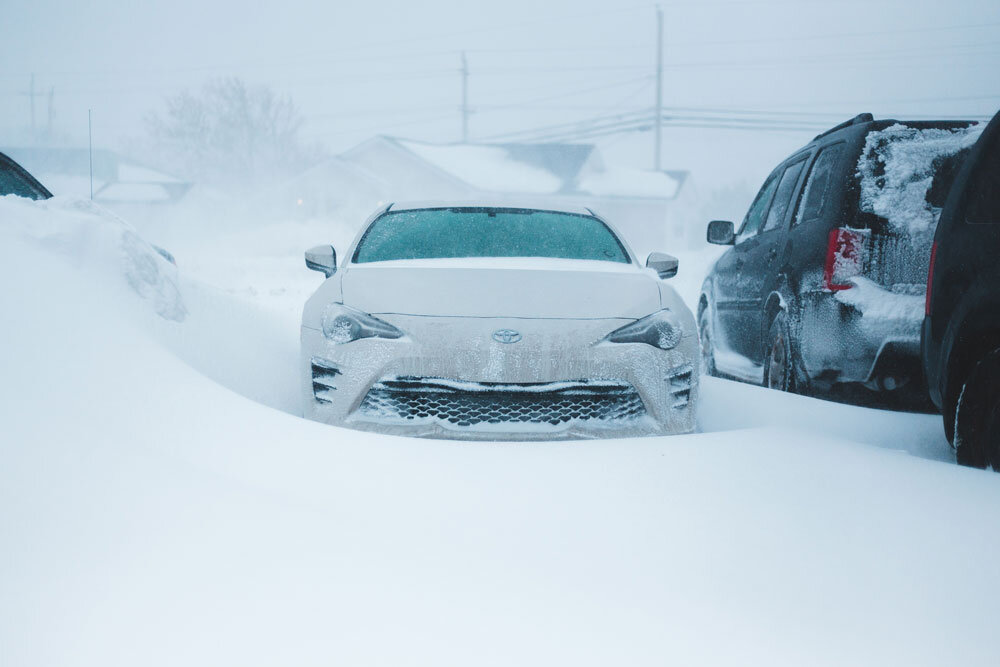Tips To Help You Winterize Your Vehicle
So Are You Going To Pickle It, Or Not?
Pilots refer to a number of different things that must be done to “pickle” an engine. The term refers to preserving the engine for long periods where it will not be used. Because of time and entropy, if you just leave an engine in an aircraft by itself, it’s going to eventually degrade sufficiently that it will cause serious, expensive damage.
While ground-bound motor vehicles don’t contend with quite the same sort of issues, over time, they will encounter similar entropic forces. This is especially true in winter, when vast temperature swings predominate for a good eight months out of the year from October to May. That’s the case in Wyoming, Montana, and the Dakotas, anyway.
Sure, there are some areas where you’re not in a sub-arctic swathe of wind, cold, and unpredictable weather conditions—seriously, meteorologists; do you people just flip a coin and then double-down? But even so, Wyoming in particular is one of the world’s coldest places. One day in January, 2017, out of the world’s 15 coldest cities, five could be found in Wyoming alone.
So you’ve got to winterize your vehicle, and if you’re new to the state, there are some distinct steps you should take. If you’re not new to the state, you should do some of these things anyway—odds are, you’ve gotten a little behind. I know I have. In this writing we’ll briefly cover a few things to check off your list for annual winterization.
Engine Considerations
You need to check engine fluid levels carefully. This will include oil levels and coolant, but don’t forget the washer fluid. While you don’t technically need it, you’ll hate yourself if you’re driving down ‘59 or I-90, and some truck kicks mud sludge on your windshield.
You’ll be blind on the ice, and that’s no good for anybody. Be sure to de-ice that washer fluid, and get coolant designed for cooler temperatures. Also, with oil, you’ll want the 5W30 for winter.
Tires
How’s the tread looking? If you have the resources, get winter tires. If not, replace the balding ones with those that will have at least a little more grab on the ice. If you’re seeing a lot of wear and tear, or if those tires look bald, just save yourself the hassle. If you’ve never got caught on ice with bald tires, it’s not an experience for your bucket list. Trust me.
Battery Considerations
Test that battery; it’s got to go bad sometime, and most likely, this time will be in winter—at the most inconvenient intersection of events. There are leads you can use to test the battery, but keep in mind you can retain functionality longer than you might expect. Refill the little reservoirs with distilled water, they’ll evaporate in cold dry climates. Also, clean the leads.
Over time, corrosion gets on those leads and messes up the connection between the battery and the rest of your vehicle’s components. When distilled water doesn’t hold the battery charge and the connection is bad, the cells lose power, and you’ll have to get jumped more often. Clean the leads and replace the water, you save yourself some trouble and extend battery life.
All you need is distilled water, a good rag, and a screw driver. Oh, you may need an adjustable wrench, depending on how tight the battery is connected. In fact, assume you’ll need that wrench. You disconnect the leads, clean them thoroughly, pop off the reservoir lids, refill with distilled water, then put them back and reconnect the leads.
If the battery was dead, either jump it, or hook it up to a charger; you’ll get a few more months out of it. If you can afford to, though, just drop $90 to $150 on a new battery—that’s a less involved decision.
Keeping Your Car Safe For The Winter
Batteries, tires, and engine fluids—these are your main winterization considerations for a regularly driven vehicle. RVs are another story that will likely be covered elsewhere on this blog later.
To learn more about this and other key pieces of information pertaining to vehicular maintenance and winterization, be sure to explore our blog at Anybody’s Autos!


